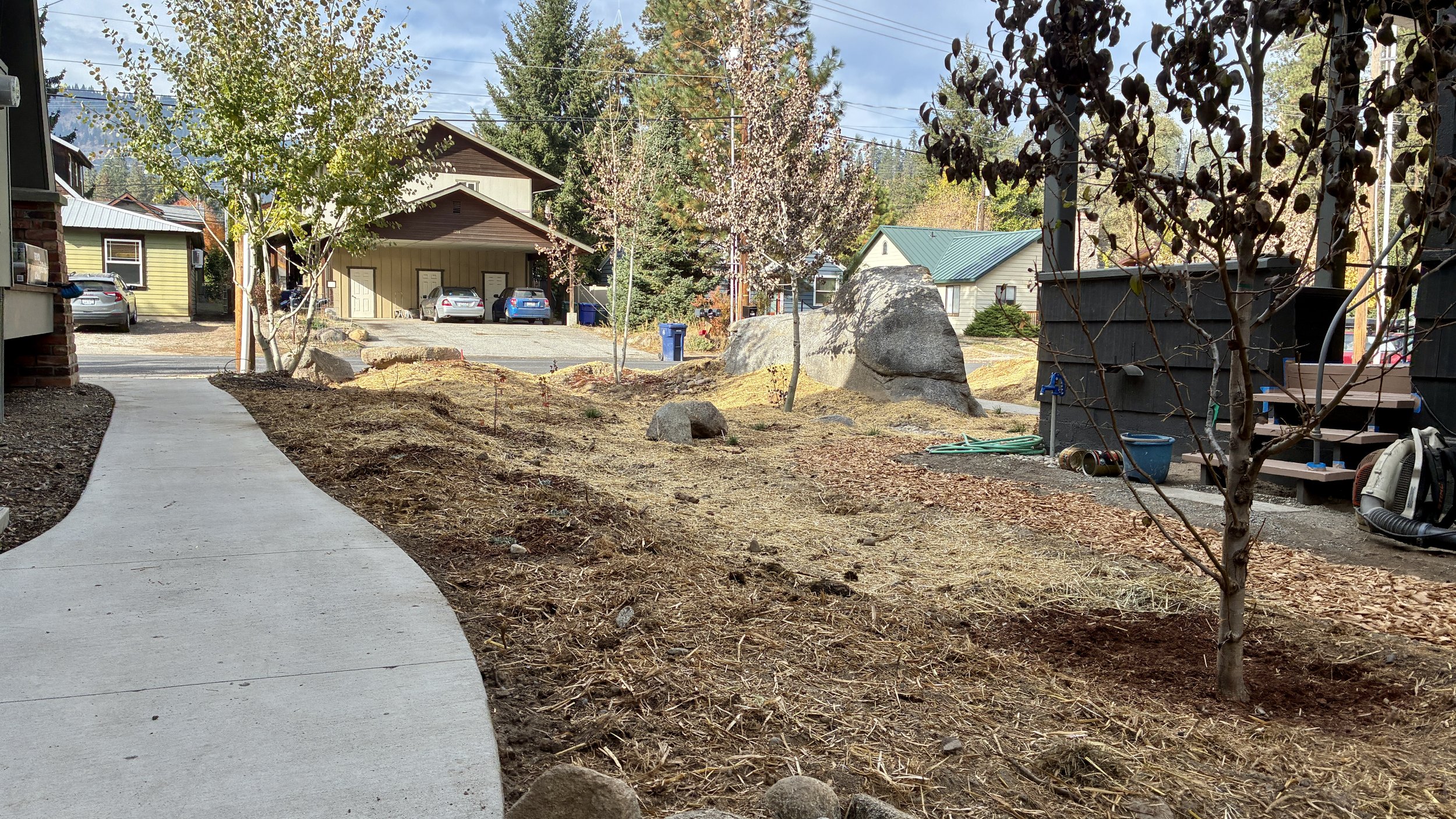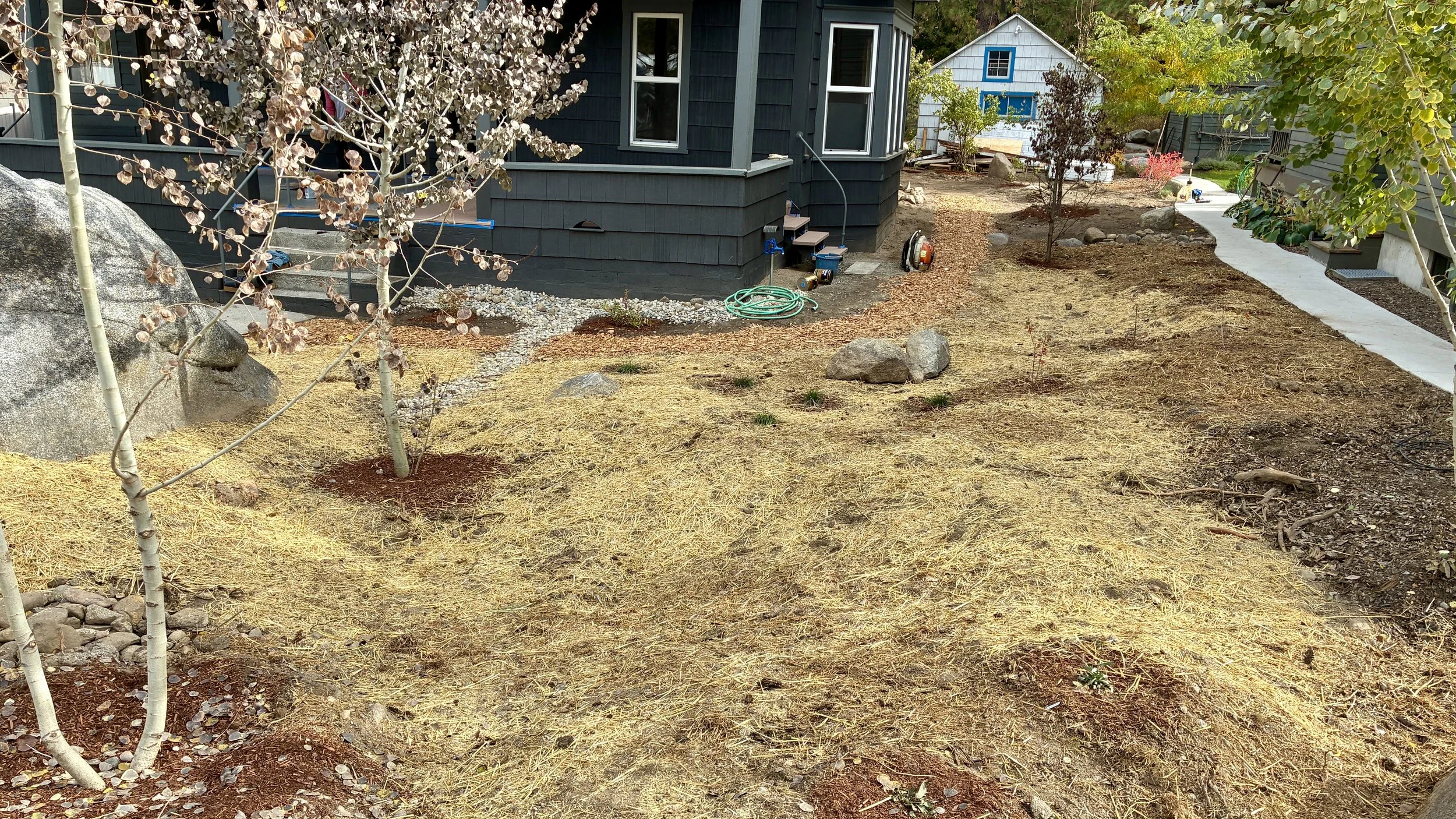Commercial St Rain Garden
We dug large basins in the main planting areas, then dug gently sloped channels along the drip line of the roof and at low points along the walkways and sidewalks. We planted these basins with various native, climate-adapted, and edible plants, seeded with 19 varieties of native wildflowers, and then covered with woodchips and straw mulch. Species to name a few include Aspen, Pear, Balsamroot, Lupine, Blanketflower, Fireweed, and California Poppy. This landscape was previously a mowed lawn with one giant boulder, and now it’s got dips and mounds and niches that next year will be full of life.
By “planting the rain”, we are holding water in the soil and plants, rather than having it run off the surface to a storm drain, out to the river and ocean, leaving the land dry and requiring ongoing irrigation. Sunken beds are also protected from evaporating winds, helping plants keep their moisture content higher and also making them less likely to burn in a wildfire. The previous lawn pulled water from the river for irrigation that mostly just evaporated, but was somewhat turned into grass, which was then repeatedly cut, providing zero to minimal food for any species. This cycle was set to repeat indefinitely, like all lawns. Now, with this landscape, any rain and snowmelt falling on this landscape will go to plants and other life forms, then gradually work its way through the soil into the water table and aquifers. Higher water tables and aquifers means water in the rivers longer throughout the summer, which means a wetter landscape that supports more life and is less prone to severe wildfires.
Hopefully this is inspirational for what can be done on a landscape near you, and may this place pop with flowers, food, and critters come next spring!


















